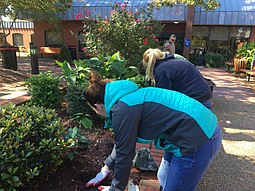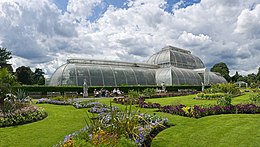
Horticulture is the science, technology, art, and business of cultivating and using plants to improve human life. Horticulturists and Horticultural Scientists create global solutions for safe, sustainable, nutritious food and healthy, restorative, and beautiful environments. This definition is seen in its etymology, which is derived from the Latin words hortus, which means "garden" and cultura which means "to cultivate". There are various divisions of horticulture because plants are grown for a variety of purposes. These divisions include, but are not limited to: gardening, plant production/propagation, arboriculture, landscaping, floriculture and turf maintenance. For each of these, there are various professions, aspects, tools used and associated challenges; Each requiring highly specialized skills and knowledge of the horticulturist.

Occupational therapy (OT) is a healthcare profession that involves the use of assessment and intervention to develop, recover, or maintain the meaningful activities, or occupations, of individuals, groups, or communities. The field of OT consists of health care practitioners trained and educated to improve mental and physical performance. Occupational therapists specialize in teaching, educating, and supporting participation in any activity that occupies an individual's time. It is an independent health profession sometimes categorized as an allied health profession and consists of occupational therapists (OTs) and occupational therapy assistants (OTAs). While OTs and OTAs have different roles, they both work with people who want to improve their mental and or physical health, disabilities, injuries, or impairments.

Urban agriculture refers to various practices of cultivating, processing, and distributing food in urban areas. The term also applies to the area activities of animal husbandry, aquaculture, beekeeping, and horticulture in an urban context. Urban agriculture is distinguished from peri-urban agriculture, which takes place in rural areas at the edge of suburbs.
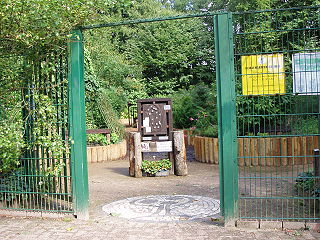
A sensory garden is a self-contained garden area that allows visitors to enjoy a wide variety of sensory experiences. Sensory gardens are designed to provide opportunities to stimulate the senses, both individually and in combination, in ways that users may not usually encounter.

Organic horticulture is the science and art of growing fruits, vegetables, flowers, or ornamental plants by following the essential principles of organic agriculture in soil building and conservation, pest management, and heirloom variety preservation.

The California State University Northridge Botanic Garden or CSUN Botanic Garden is located in the northern San Fernando Valley, in the southeast section ("quadrant") of the California State University, Northridge campus in the community of Northridge in Los Angeles, California.

The Chicago Botanic Garden is a 385-acre (156 ha) living plant museum situated on nine islands in the Cook County Forest Preserves. It features 27 display gardens and five natural habitats including Mary Mix McDonald Woods, Barbara Brown Nature Reserve, Dixon Prairie, the Skokie River Corridor, and the Lakes and Shorelines. The garden is open every day of the year. An admission fee has been approved to start in 2022, not to exceed $35.

The Guild for Exceptional Children is a nonprofit organization in Brooklyn which offers schooling and other services for children and adults with a disability. It identifies itself as a provider of direct and indirect services for developmentally delayed or disabled persons, from infancy through old age, and their families.

Urban horticulture is the science and study of the growing plants in an urban environment. It focuses on the functional use of horticulture so as to maintain and improve the surrounding urban area. Urban horticulture has seen an increase in attention with the global trend of urbanization and works to study the harvest, aesthetic, architectural, recreational and psychological purposes and effects of plants in urban environments.

Olericulture is the science of vegetable growing, dealing with the culture of non-woody (herbaceous) plants for food.

Hadlow College is a further and higher education college in Hadlow, Kent, England, with a satellite site in Greenwich. The curriculum primarily covers land-based subjects including Agriculture, Horticulture, Conservation and Wildlife Management, Animal Management, Fisheries Management, Equine Studies and Floristry. Additionally, intermediate and advanced apprenticeships are offered in Golf Greenkeeping, Sports Turf, Agriculture, Horticulture and Land-based Engineering.
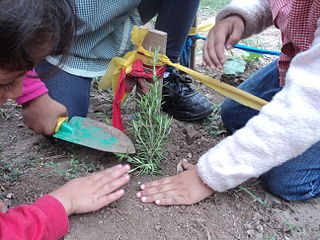
Garden-based learning (GBL) encompasses programs, activities and projects in which the garden is the foundation for integrated learning, in and across disciplines, through active, engaging, real-world experiences that have personal meaning for children, youth, adults and communities in an informal outside learning setting. Garden-based learning is an instructional strategy that utilizes the garden as a teaching tool.

A therapeutic garden or wellness garden is an outdoor garden space that has been specifically designed to meet the physical, psychological, social and spiritual needs of the people using the garden as well as their caregivers, family members and friends.
Magee Rehabilitation Hospital, part of Jefferson Health, founded in 1958, is a 96-bed specialty medical rehabilitation hospital providing physical and cognitive rehabilitation services. Magee's flagship facility is located in Center City Philadelphia. In addition to the main campus that offers comprehensive services for spinal cord injury, brain injury, stroke, orthopaedic replacement, amputation, pain management and work injury, Magee provides an expanding outpatient network serving the surrounding communities.
A sensory room is a special room designed to develop a person's sense, usually through special lighting, music, and objects. It can be used as a therapy for children with limited communication skills.

Mustafa Kemal University, abbreviated as MKU, is a public university established 1992 at Antakya, Hatay Province in southern Turkey. It is named after the founder of the Turkish Republic, Mustafa Kemal Atatürk.

Care farming is the use of farming practices for the stated purpose of providing or promoting healing, mental health, social, or educational care services. Convicts may also be required to spend time at care farms. Care farms may provide supervised, structured programs of farming-related activities, including animal husbandry, crop and vegetable production and woodland management.

Gardening Leave was a British registered horticultural therapy charity that focused on the mental health of British Armed Forces veterans. It supported veterans with a wide range of mental health conditions including depression, anxiety and posttraumatic stress disorder (PTSD). Through horticultural therapy sessions, the charity aimed to maximise a veteran's physical, psychological and social strength, and enhance general health and well-being.

Serene Oasis is a garden adopting horticulture as a new emerging approach of therapy in Hong Kong. Its major goal is to improve the condition of people suffering from mental illnesses such as dementia and depression. Besides, the organization is also committed to promoting horticulture and green life in Hong Kong. It provides professional training programmes of horticulture and courses for planting. The rate of depression among senior citizens in Hong Kong has been increasing, so Serene Oasis aims to build up diversified therapeutic services to cope with the worsening mental health of people.
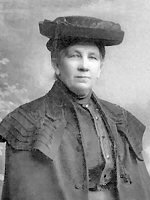
Alexandra Eleonora "Nora" Pöyhönen was a Finnish horticulturist and school director.
